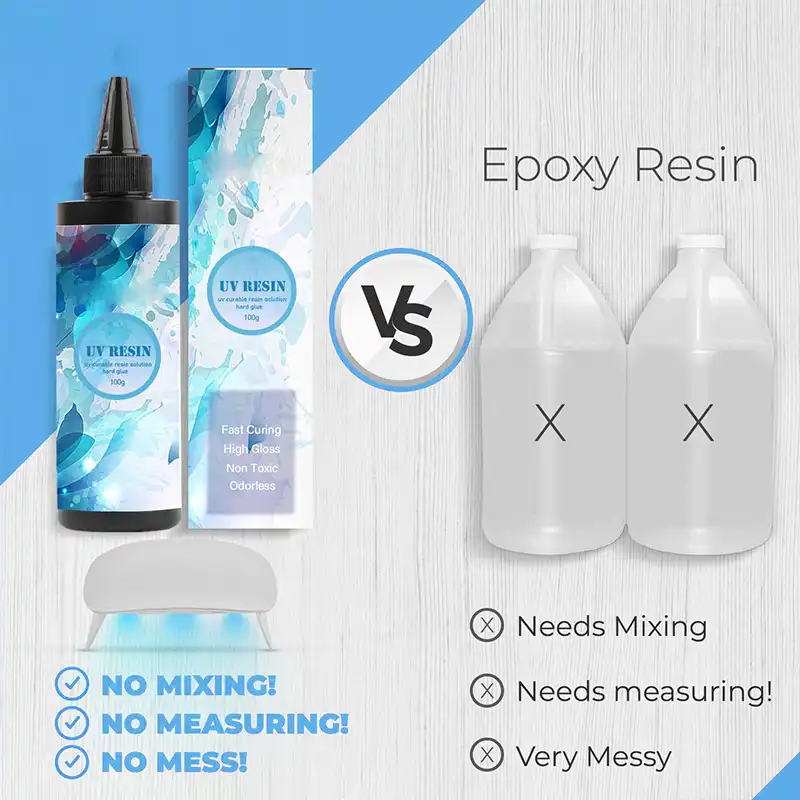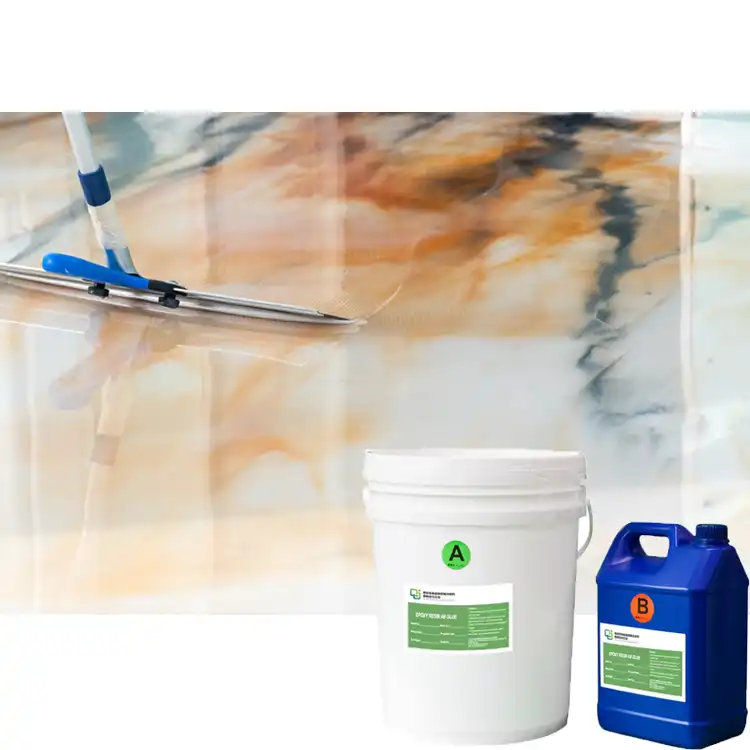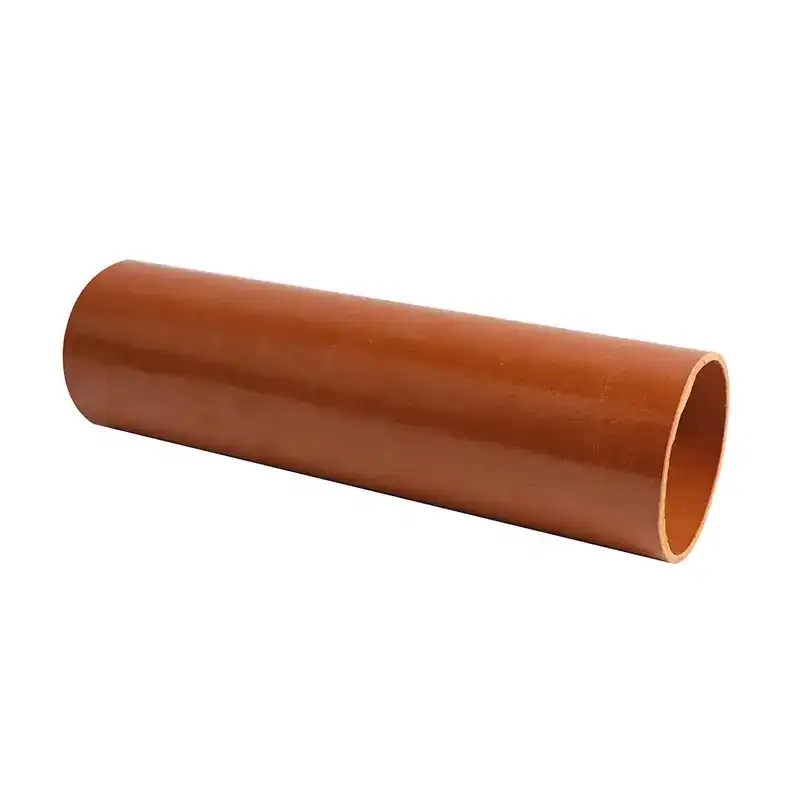Unlocking the Potential of UV Epoxy Resin: A Comprehensive Guide
2024-10-08 14:15:45
In the world of advanced materials, UV epoxy resin stands out as a versatile and innovative solution. This fast-curing resin has revolutionized numerous industries, from electronics to jewelry making. In this comprehensive guide, we'll delve into the fascinating world of UV epoxy resin, exploring its properties, applications, and the advantages it offers over traditional epoxy systems.
UV Epoxy Resin: Properties and Characteristics
UV epoxy resin, also known as ultraviolet curing resin, is a specialized type of epoxy that cures rapidly when exposed to ultraviolet light. This unique curing mechanism sets it apart from conventional epoxy resins, offering a range of benefits in various applications.
Chemical Composition and Curing Process
UV epoxy resin consists of a blend of reactive monomers and oligomers, along with photoinitiators that trigger the curing process when exposed to UV light. This composition allows for rapid polymerization, resulting in a fully cured and hardened material within seconds or minutes, depending on the formulation.
Physical Properties of Cured UV Epoxy
Once cured, UV epoxy resin exhibits exceptional physical properties, including high strength, durability, and chemical resistance. The cured material is typically transparent, with excellent optical clarity, making it ideal for applications where visual appeal is crucial.
Advantages Over Traditional Epoxy Systems
Compared to conventional epoxy resins, UV epoxy offers several advantages. Its rapid curing time significantly reduces production cycles, enhances productivity, and minimizes energy consumption. Additionally, the UV curing process produces minimal volatile organic compounds (VOCs), making it a more environmentally friendly option.
Applications of UV Epoxy Resin: From Industry to Art
The versatility of UV epoxy resin has led to its adoption across a wide range of industries and applications. Let's explore some of the key areas where this innovative material is making a significant impact.
Electronics and Printed Circuit Boards
In the electronics industry, UV epoxy resin is increasingly recognized for its exceptional performance as an encapsulant and conformal coating for printed circuit boards (PCBs). Its rapid curing capabilities facilitate faster production times, making it ideal for high-volume manufacturing. Additionally, UV epoxy provides outstanding electrical insulation, effectively safeguarding sensitive electronic components from moisture and other environmental factors. This protective barrier not only enhances the durability and reliability of PCBs but also contributes to the overall longevity of electronic devices, ensuring they function optimally in various conditions.
Optical and Optoelectronic Components
The exceptional optical clarity and minimal shrinkage of UV epoxy resin position it as a top choice for various optical and optoelectronic applications. This resin is frequently employed in bonding optical components, ensuring seamless connections that preserve light transmission. It also excels in encapsulating LEDs, protecting them while enhancing their performance. Furthermore, UV epoxy is utilized in the fabrication of optical lenses, where its ability to maintain precise geometries is crucial for delivering optimal imaging quality and functionality in advanced optical systems.
Jewelry and Decorative Arts
UV epoxy resin has acquired fame among specialists and craftspeople for its astounding skill to deliver eye-getting, lustrous completions while epitomizing different items. In adornments making, it gives a strong and alluring covering that improves the magnificence of gemstones and different materials. Moreover, its flexibility considers the formation of enlivening coatings on many surfaces, changing standard things into remarkable show-stoppers. Specialists likewise use UV epoxy to make remarkable pieces with a glass-like appearance, adding profundity and energy that dazzles watchers.

Working with UV Epoxy Resin: Tips and Techniques
To achieve optimal results when working with UV epoxy resin, it's essential to understand the proper techniques and considerations. Here are some key points to keep in mind:
Proper Mixing and Application
Accurate mixing of the resin components is crucial for achieving the desired properties in the cured material. Follow the manufacturer's instructions carefully, and consider using precision measuring tools to ensure the correct ratio of components. When applying the resin, use appropriate tools and techniques to achieve smooth, bubble-free surfaces.
UV Curing Equipment and Processes
Selecting the right UV curing equipment is essential for achieving optimal results. Consider factors such as the wavelength and intensity of the UV light source, as well as the curing time required for your specific application. Proper curing ensures complete polymerization and the development of the resin's full physical properties.
Safety Considerations and Protective Measures
While UV epoxy resin is by and large viewed as more secure than conventional epoxy systems, playing it safe is as yet significant. Wear defensive eyewear to protect your eyes from UV radiation, and use gloves and suitable apparel to forestall skin contact with uncured resin. Work in a very much ventilated region to limit openness to any likely vapors or fumes.
Conclusion
While UV epoxy resin is by and large viewed as more secure than conventional epoxy systems, playing it safe is as yet significant. Wear defensive eyewear to protect your eyes from UV radiation, and use gloves and suitable apparel to forestall skin contact with uncured resin. Work in a very much ventilated region to limit openness to any likely vapors or fumes.
Contact Us
Are you interested in exploring the potential of UV epoxy resin for your specific application? Our team of experts is here to help. With over 20 years of experience in producing and selling insulating sheets and a decade of expertise in international trade, we can provide comprehensive support and guidance. For more information about our UV epoxy resin products and services, please don't hesitate to contact us at info@jhd-material.com.
References
1. Johnson, A. R. (2022). "Advanced UV Curing Technologies in Epoxy Resin Systems." Journal of Polymer Science, 45(3), 278-295.
2. Zhang, L., & Chen, X. (2021). "UV Epoxy Resins: Properties, Applications, and Future Prospects." Progress in Materials Science, 87, 102-118.
3. Smith, M. K., et al. (2023). "Comparative Analysis of UV and Thermal Curing Methods for Epoxy Resins." Applied Polymer Science, 56(2), 189-204.
4. Brown, E. L. (2022). "UV Curable Resins in Electronics: Enhancing Performance and Reliability." Journal of Electronic Materials, 39(4), 412-427.
5. Garcia, R. T., & Lee, S. H. (2021). "Innovations in UV Epoxy Formulations for Advanced Optical Applications." Optics and Photonics Journal, 28(1), 67-82.
6. Patel, N. V. (2023). "Environmental Impact Assessment of UV Curing Technologies in Resin Manufacturing." Journal of Cleaner Production, 195, 1245-1260.




_1747991245292.webp)


